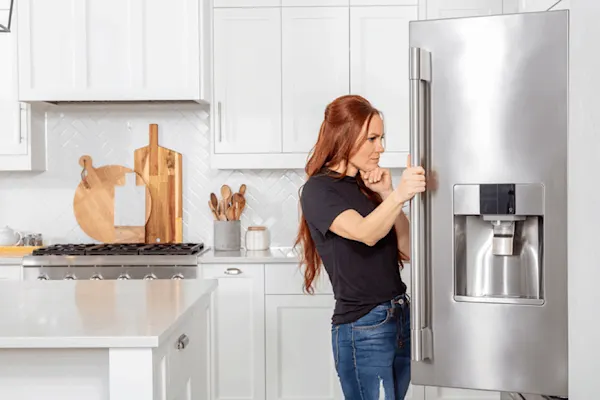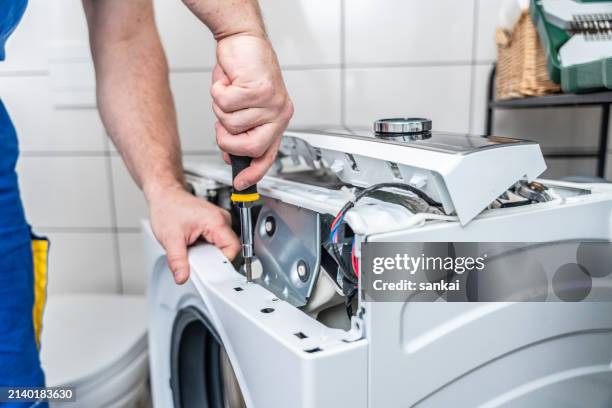The Ultimate Overview to Recognizing Home Appliance Repair in your home
When your fridge stops cooling or your stove refuses to warmth, it can feel frustrating. Recognizing device fixing at home can save you money and time. You'll discover to recognize symptoms, utilize vital devices, and follow a systematic troubleshooting procedure. Yet prior to you begin, there are essential security preventative measures you require to think about. What are one of the most typical problems, and exactly how can you repair them? Allow's check out the essentials.
Typical Device Troubles and Their Signs and symptoms
When your home appliances begin acting up, it's important to recognize the indicators early. Ignoring them can result in bigger problems and pricey repairs. As an example, if your fridge isn't cooling appropriately, you could observe warm places or condensation developing. This might show a stopping working compressor or a blocked vent.Your dish washer may reveal troubles with unclean dishes or unusual noises throughout cycles. If you hear grinding or clanking, it's time to investigate.A washing equipment that won't rotate or drain pipes can leave you with soaked laundry, recommending a stopped up drainpipe or a malfunctioning pump.Lastly, if your stove's temperature appears off or it takes forever to preheat, you might be taking care of a malfunctioning thermostat. By staying alert to these symptoms, you can address problems prior to they escalate right into significant repairs.
Crucial Tools for Home Appliance Repair Service
When you're tackling home appliance repair services in the house, having the right devices is necessary. Fundamental hand tools like screwdrivers and pliers will assist you take apart and deal with various appliances, while electric screening devices ensure you're working safely with circuitry. Let's discuss what you need to get going on your fixing journey.
Standard Hand Tools
Having the right devices is necessary for efficient home appliance repair work in the house. Beginning with a trustworthy screwdriver collection, including both flathead and Phillips types, as screws are common in appliance setting up. Pliers are additionally important; they help with gripping, turning, and reducing wires or little elements. A pair of needle-nose pliers can get to tight areas quickly. You'll require an excellent adjustable wrench for tightening or loosening up nuts and bolts. An utility blade comes in handy for puncturing product packaging or insulation. Lastly, do not fail to remember a durable workbench or surface to securely organize your tools and components. With these standard hand tools, you'll be well-prepared to take on most device fixings that come your way.
Electric Testing Devices
Along with standard hand tools, electric testing devices play a crucial function in device repair work. These devices assist you diagnose electric issues and guarantee appliances work securely. A multimeter is important; it measures voltage, existing, and resistance, permitting you to identify issues quickly. A non-contact voltage tester is one more essential, allowing you discover live cords without making direct get in touch with, boosting your security. Secure meters are excellent for gauging current circulation in cords without disconnecting them, saving you effort and time. In addition, circuit testers can swiftly check if outlets are working effectively. By utilizing these gadgets, you'll simplify your troubleshooting process and enhance your fixing skills, making home appliance upkeep a whole lot simpler.
Step-by-Step Overview to Diagnosing Device Issues
When your appliance acts up, it can be discouraging, but diagnosing the problem doesn't have to be overwhelming. You'll discover to determine typical troubles and apply effective troubleshooting techniques. Let's go through the steps to get your device back in working order.
Common Appliance Problems

Troubleshooting Techniques Discussed

Repairing Significant Kitchen Devices: A Closer Look
Have you ever before questioned how to deal with common concerns with your cooking area home appliances? Fixing major cooking area appliances like fridges, ovens, and dish washers can be much easier than you believe. Start by recognizing the issue-- whether it's a refrigerator not cooling or an oven that won't heat up. Usually, a straightforward reset or checking the source of power can solve the issue.For fridges, clean the condenser coils and examine the door seals. If your oven's not heating, evaluate the heating aspect and thermostat. Dishwashing machines might simply require a clean filter or a reset to get them back in activity. Constantly disconnect the home appliance prior to diving right into repairs to assure your safety.Don' t forget to seek advice from the customer handbook for details troubleshooting ideas connected to your design. With a little bit visit the site of persistence and the right devices, you can with confidence take on home appliance fixings and save cash at the same time!

Repairing Laundry Devices: Tips and Techniques
When your washing appliances begin breaking down, it can really feel overwhelming, however troubleshooting them does not need to be a headache. Begin by checking the power supply. Verify the device is plugged in and the outlet is operating. Next off, inspect the door or cover switch; a faulty switch can stop the device from operating.For washing machines, if it's not Click This Link spinning, look for out of balance lots. Redistributing the clothes may resolve the problem. If your clothes dryer isn't heating, tidy the dust filter and examine the air vent for blockages.Listen for uncommon sounds; they can suggest an issue. If your appliance is dripping, examine the tubes for cracks or loose connections. File any kind of mistake codes presented on electronic screens, as they can assist you in identifying the problem. Ultimately, speak with the customer handbook for certain repairing tips connected to your model.
Safety Precautions to Take During Repairs
Prior to you start any type of home appliance fixings, it's important to focus on safety and security to protect against crashes or injuries. First, disconnect the home appliance or turn off the circuit breaker to guarantee no power reaches it while you work. Use shielded devices to reduce the threat of electric shock. Use security goggles and handwear covers to shield on your own from sharp sides or debris (Washer dryer repair service Dependable Refrigeration).Make specific your work area is clean and well-lit, so you can see what you're doing. Keep children and family pets away from the location to avoid diversions and prospective hazards. If you're taking care of gas appliances, be extra careful; look for leaks prior to proceeding.Take your time, and do not hurry via repair work. If you feel unpredictable concerning any kind of step, it's far better to pause and study than to guess. Complying with these safety measures will assist develop a safer environment for your do it yourself appliance repair service task
When to Call a Professional for Aid
Just how do you recognize if it's time to contact a specialist for appliance repair work? If you have actually attempted basic troubleshooting without success, it's a clear sign. If your device still will not begin or reveals unusual noises after resetting it, do not think twice to seek professional help.When you discover here notice leaks, smoke, or burning smells, prioritize security and call a pro quickly. These concerns can result in more considerable damage or position threats to your home.Also, if your home appliance is under guarantee, calling a specialist is often the very best course. They can assure that repairs won't nullify your service warranty, saving you cash in the lengthy run.Finally, if you're uncertain or awkward with complex repair work, it's wise to leave it to the experts. Remember, taking on challenging problems without the ideal competence can result in expensive blunders. Depend on a professional when unsure!
Often Asked Questions
How Can I Protect Against Home Appliance Problems in the Future?
To stop device issues in the future, you should do regular maintenance, look for damage, clean filters, and avoid overloading. Remaining proactive will help expand their lifespan and maintain them running smoothly.
What Are the A Lot Of Typical DIY Device Repair Work Mistakes?
You could forget safety preventative measures, skip troubleshooting steps, or make use of wrong devices when attempting DIY device repair work. Hurrying the process or overlooking maker guidelines can cause more considerable issues and pricey errors. Keep patient and notified!
How Do I Know if a Component Needs Substitute?
You can tell if a part needs substitute by looking for uncommon sounds, leakages, or irregular performance. If the home appliance has a hard time to run correctly or shows noticeable damage, it's likely time for a substitute.
Can I Use Generic Components for Appliance Fixes?
Yes, you can use generic components for appliance repair services, yet establish they're compatible - Dependable Refrigeration & Appliance Repair Service Washer repair near me. Generic components may conserve you money, yet they could impact performance or longevity, so evaluate your alternatives carefully before deciding
What Warranties Cover Appliance Repair Works?
Many home appliance guarantees cover repair work for producing defects, but they typically omit damage from misuse. Inspect your guarantee terms thoroughly, as some may call for making use of licensed professionals and initial parts for protection to stay legitimate.